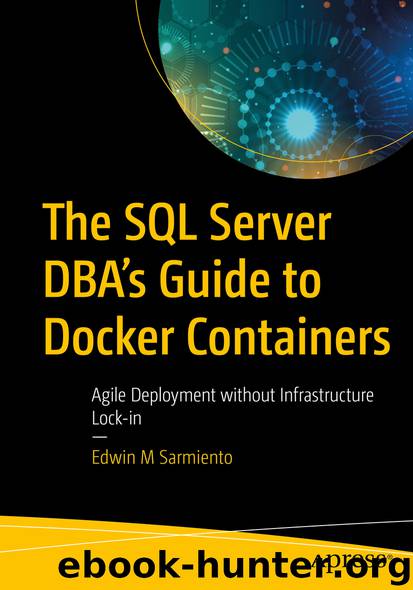The SQL Server DBA’s Guide to Docker Containers by Edwin M Sarmiento

Author:Edwin M Sarmiento
Language: eng
Format: epub
ISBN: 9781484258262
Publisher: Apress
I’m sure Slava Oks and his team were not even thinking about porting SQL Server to Linux back in 2005 when they worked on SQLOS. It just magically happened.
Tip
Chapter 1 of the Apress book Pro SQL Server on Linux by Bob Ward covers this in more detail.
Difference Between SQL Server on Windows vs. Linux
Having gone through the previous section “SQL Server on Linux Architecture,” it’s pretty obvious that there really isn’t any difference between SQL Server running on Windows and on Linux – it’s the same database engine. The SQL Server engineering team made every effort to use the same code base on both platforms. However, due to the long history of development for the Windows platform, SQL Server will definitely have more supported features on Windows than on Linux. For example, when SQL Server 2017 came out, transactional and merge replication were not available yet. Transactional replication is already supported on SQL Server 2019, but merge replication still isn’t. As later versions are released, you bet that the features will be the same for both platforms. It’s just a matter of time. Refer to the documentation at https://docs.microsoft.com/sql/linux/sql-server-linux-editions-and-components-2017 for a complete list of supported features for SQL Server 2017 on Linux and https://docs.microsoft.com/en-us/sql/linux/sql-server-linux-editions-and-components-2019 for SQL Server 2019 on Linux.
From my experience, the biggest difference that you’ll see will be your personal experience. When you’ve worked with SQL Server your entire career and have spent your working hours on a rich graphical user interface like the Microsoft Management Console interacting with the operating system, working on the command line like you’ve been doing running Docker commands can really feel very awkward. You’ll hear yourself say, “this task is way easier on Windows.” Or when you can’t run a command because you forgot to request for root privileges, you’ll whisper a few “#&%@$#%!” words as you hit the keys on your keyboard. On the other hand, if you’ve also been managing other database platforms running on Linux and have written shell scripts to automate boring tasks, running SQL Server on Linux will be like a heaven-sent gift, wondering why Microsoft didn’t do this years ago. Your personal experience, preference, and even biases will highlight those differences. But once you’re inside SQL Server Management Studio, you won’t be able to tell the difference.
Download
This site does not store any files on its server. We only index and link to content provided by other sites. Please contact the content providers to delete copyright contents if any and email us, we'll remove relevant links or contents immediately.
Algorithms of the Intelligent Web by Haralambos Marmanis;Dmitry Babenko(16280)
Azure Data and AI Architect Handbook by Olivier Mertens & Breght Van Baelen(7676)
Building Statistical Models in Python by Huy Hoang Nguyen & Paul N Adams & Stuart J Miller(7658)
Serverless Machine Learning with Amazon Redshift ML by Debu Panda & Phil Bates & Bhanu Pittampally & Sumeet Joshi(7531)
Driving Data Quality with Data Contracts by Andrew Jones(7296)
Data Wrangling on AWS by Navnit Shukla | Sankar M | Sam Palani(7291)
Machine Learning Model Serving Patterns and Best Practices by Md Johirul Islam(7032)
Learning SQL by Alan Beaulieu(6239)
Weapons of Math Destruction by Cathy O'Neil(6221)
Big Data Analysis with Python by Ivan Marin(5937)
Data Engineering with dbt by Roberto Zagni(4934)
Solidity Programming Essentials by Ritesh Modi(4568)
Time Series Analysis with Python Cookbook by Tarek A. Atwan(4403)
Pandas Cookbook by Theodore Petrou(4088)
Blockchain Basics by Daniel Drescher(3544)
Natural Language Processing with Java Cookbook by Richard M. Reese(3148)
Hands-On Machine Learning for Algorithmic Trading by Stefan Jansen(3052)
Learn T-SQL Querying by Pam Lahoud & Pedro Lopes(2934)
Feature Store for Machine Learning by Jayanth Kumar M J(2928)
